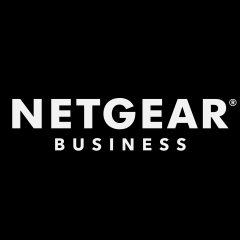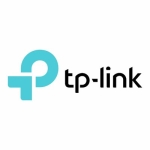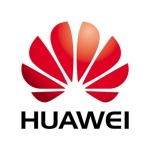What is our primary use case?
The primary use case for this switch was for when we were involving the more intensive AV over IP stuff, specifically the SDVoE products that NETGEAR has partnered with. The reason that we picked them over competitors was knowing that they were one of the founding partners of the SDVoE Alliance, which gave us a lot of assurances that the product would work well in this type of deployment.
In our experience, any type of AV over IP stuff has always been plagued with some sort of network hiccuping, and there is always a big learning curve. Therefore, knowing that NETGEAR specifically worked with the SDVoE Alliance to make it work, this gave us a lot of confidence going into this project.
The use case was for a high school's distributed audio/video system. So, it ran audio/video in multiple gymnasiums, gathering spaces, and small collaboration rooms.
The reason that we went with SDVoE is the amount of sources and destinations were high enough, where if we were ever going to do it over traditional HDBaseT or some type of matrix switcher, then it would've been some crazy card loaded thing and I would've had to mix copper and fiber. It was enough that if we had to get into a 32x32 matrix switch, and at that price point, I was like, "This is silly, let's just go AV over IP, then we have no limitations or concerns with our inputs and outputs. We also have no risk of them adding a thirty-third input, then throwing out that switch and having to buy a whole new one."
In this specific case that we've used it for, we replaced a video matrix switch with it. The original design from the bid was to use a big 32x32 matrix switch. We decided that since we are doing a bunch of other network stuff here as well, in terms of control and audio, why don't we do audio, video, and everything over IP, putting everything on the same switch. So, instead of having 14 different devices to manage, I have five. It worked out really well in the long run.
We use M4300-96X and M4300 48-Port PoE 1Gb switches. At the moment, we are just using this with one customer.
How has it helped my organization?
If our company was going to buy a new office and deploy a bunch of stuff, it would be one of these switches that I would purchase, especially because you're able to stack different models and types, then manage it nice and easily. I could see, as a network administrator, the ability to look at your entire network from one page and have the ability to diagnose and fix problems in one area. That would be fantastic.
What is most valuable?
We did a deployment where we were running about a 10Gb video endpoint sources, so we were utilizing a much larger amount of backplane bandwidth than we were used to using. We used the 96X as the core switch, then stacked it with the other single gigabit switches. So, knowing that the 96X had more than enough of backplane bandwidth than anything we could throw at it now or in the future, makes us confident that we were going in the right direction. Not to mention, the 96X was one of the only switches that I could find that would do 10Gb with POE over copper, which was a hard fast requirement for our job.
Honestly, getting the 10Gb to work was simple. Just follow good termination practices in terms of your fiber and your copper, then it worked flawlessly. For us to have a system where we can run a 4K video source virtually anywhere in a building without having to worry about really expensive matrix switchers, etc., this is the way AV is going in the next little while. In this project, we knew that we were ahead of the curve, and there was no chance of running into bandwidth limitations, or anything like that.
It wasn't a feature that I knew I would need, but once we deployed it, it came in very handy. You can stack different models of switches. The fact that we can stack the 96X, which is the modeler switch for 10Gb cards or 40Gb. We can stack that with the 1Gb PoE 48 port switch. The ability to mix and match is invaluable. So, we didn't have to run massive super extensive switches in the data closets where it wasn't necessary. Being able to manage it all from one place, as all your network configuration settings went live across your entire building from one management console was really handy.
What needs improvement?
Since this is my first time working with this specific switch interface, the interface was pretty intuitive. The only area I found a little bit confusing was how they separated IGMP. So IGMP integration could be found both in the switching area of the switch, but also in the routing area of the switch. Therefore, it wasn't super clear which of those did which. As a beginner with the switch. it was a bit confusing at first to know, for example, "Where do I need to set this up? If I'm doing this, why does this work, and why doesn't this work?" Otherwise, the interface of the switch is pretty simple. I just found the IGMP a bit convoluted.
I was able to reach out to another guy who had used this particular switch in the past. He sort of explained some of the nomenclature that NETGEAR uses to explain things. It's just different from some of the other (especially lower-end) switches that I've worked with. It is just finding out how people explain their particular way to doing things.
The IGMP specifics of the web management console could use a bit of clarification. This is sort of a specific thing. Every switch manufacturer has their own idiosyncrasies, like managing Dell switches for QoS, I find to be really weird. However, QoS on the NETGEAR was brilliantly easy and super self-explanatory.
I would like an email notification in case of errors or failures. If it was possible for the switch to email out an error log or notification note, especially in cases where we have the switches offsite (on the other side of town), then if something was to go wrong, it would be great to know about it before our client goes to use it for a big event, and it doesn't work. While I know that it does do SNMP, which is sort of standard, in the AV world, that is not always an option for us. We are usually running our own little network box and don't always have access to an SNMP server. We may just have simple Internet access or something similar. This is a very common feature on other managed equipment, like control systems, projectors, and certain power management devices. These have that email notification built into them.
A use case that I can think of is say somebody accidentally cuts an uplink wire between two switches. It would be fantastic if your core switch or one of the other switches could notice that disconnect and fire on an email to the manager, or the client, saying, "Hey, we've detected this problem. It happened at this time and date." Instead of having to run around the building trying to find out why things aren't working, you could have that information from a service standpoint ahead of schedule.
For how long have I used the solution?
We are an AV integration company, so we used them for one of our larger jobs we did last year. I had four to five months of good solid interaction with the equipment. Now, it is there onsite when we just go there to do servicing tests.
What do I think about the stability of the solution?
So far, in the year that they have been deployed, the switches have been pretty maintenance free. It does depend on your location. If it is in a dusty location, you will want to get in there and give it a cleaning every once in a while. However, the firmware updates and monitoring are nice and easy.
The only issue that I have ever had was after a power outage. When the system came back up, the IGMP querier didn't elect properly. Then, I had to dive into the web console and disable it, then enable it for the querier to come back up again. That was the only hiccup that I found, where I could see the settings were correct in the switch, but for reasons that I couldn't quite figure out, it didn't actually elect a querier. So, this caused some broadcast storm issues on the switch. Once, I re-enabled it, it worked fine.
What do I think about the scalability of the solution?
You are not limited in terms of stacking ports, and especially, if you're using the 96X as a core switch, the scalability, I could see this being very large. If you're using a type of a hybrid topology with a core switch going out to multiple switch stacks, or something like that, I could see the scalability of this being very good, especially considering the type of backplane switching capacity on the 96X.
Our customer uses it virtually everyday. As for expansion plans, it is used in an educational facility. Therefore, plans for expansion are always there, but they only happen when there is funding available. They are planning on adding additional display locations into other areas of the building and the ability to live stream from any of their sources out to YouTube and other sources. There is definitely talk of expansion and potential upgrades to the 4K sources and displays in the future.
We are using 15 percent of the switch's capacity right now. We are in no rush of maxing out the equipment.
How are customer service and technical support?
My first experience with NETGEAR tech support wasn't fantastic. When I was having issues trying to get the IGMP sorted out, I called tech support. They wanted me to pay to talk to the tech support, and I had literally bought the switch two months ago. I expressed my frustration to that. I was like, "There is no warranty and no actual support for the product that you just sold me?" That is when I involved a a guy who was much smarter than me out in Toronto, and had worked with these types of issues before.
Eventually, when I posted on the forums, however, I had great support. When I posted on their NETGEAR forums, I received some emails and phone calls from NETGEAR tech support. They had me to do some packet captures and send information. From what I know, they actually based one of their firmware updates on some of the issues that we were having.
My first instinct when I have tech support issues is to try to get somebody actually on the phone, and getting through to the right person on NETGEAR's general number was a bit challenging. However, when I reached out through their web forum, it was pretty good. Not only did I get some great advice and support from fellow NETGEAR users, but I also had engineers directly following up with me. Then, the same person that emailed me was also the person that called me, so I had a single point of contact from then on, which was nice. I wasn't caught in a customer service black hole.
Which solution did I use previously and why did I switch?
The performance, expandability, and price point comparison, along with the redesigned part of the spec, made a convincing case to switch to the 96X. There was also AP over IP, in terms of how it manages audio and tracking from video. When we were able to show the cost and performance benefits to the client, they were onboard.
How was the initial setup?
The initial setup was pretty straightforward. I don't have a lot of networking background, and I was able to get it up and running through either the intuitiveness of the web console or online documentation, which was pretty reassuring.
I spent probably about three days getting the network stuff configured, then another day doing deployment and commissioning. Setting up the switches was pretty easy, but making sure that the switches worked with the 47 different devices that I had a connected to it, that is where most of the time took.
When the SDVoE installations are configured correctly, the performance is amazing. Depending on the specific video equipment that you are using, the switching is either literally instantaneous or fairly fast and glitch-free. If somebody were to tell me this was video over IP, I wouldn't be able to notice. There is no artifacting, no compression, nor latecy. For mission-critical, high-end video, SDVoE is the way to go.
If it were just an SDVoE situation, I could literally plug it right out-of-the-box and go. In our particular installation, we were also using Q-SYS audio over IP, Dante, and some other control systems on the same network. Therefore, there is a bit of configuration to get all of those different protocols to play well on the switch in terms of managing QoS, managing different versions of IGMP, and making sure the filtering wasn't causing packets to get lost. However, once it was configured, it was nice and stable. It's been running for months without any issues and no downtime at all.
What about the implementation team?
I had a consultant out in Toronto who helped me out with some of the more detailed IGMP configuration issues, but it's was mostly just me.
This switch isn't for the DIYer. A DIYer should get one of those easy cloud managed ones, like an Ubiquiti, etc. Because if you need this switch, you're probably doing a type of deployment where you need to have some network jobs. You don't need to be the guy who does everything through a terminal or certified network specialist in order to set up the basic settings, but some experience using managed switches is definitely an asset.
We had our goal: a multiroom rather large deployment. We shop tested everything before we deployed it onsite. We had all of the switches set up and linked with fiber and connected to as many of the devices that we could. We ran it through a mock setup and sort of torture tested it to see if it would survive power cycling, brownout, or devices connecting and disconnecting.
We wanted to do this because the site was rather large and having to do this type of servicing and testing when everything was deployed would have been really problematic. We found and addressed a few small idiosyncrasies that would have been very challenging onsite, because some equipment was stored up in ceilings or in areas which were hard to access.
What was our ROI?
The real return on investment is the ability of future scalability. Knowing if their building grows or as their AV and IP needs in the building grow that we can easily accommodate it. What is bad about the old way of doing AV is that when you max out your equipment, the only way to add more is to usually throw out that piece of equipment that you previously bought, and buy a new, bigger piece of equipment, then go from there. This has much higher equipment costs. There are the reconfiguration costs and the installation cost. If you're a dealer, it's always great to make a lot of money, but the way that we like doing business is to try to find the smartest, best, long-term solution for our clients.
For example, if they want another projector, then we will throw another projector in. This one is SDVoE compatible. Great, then we will just plug that projector right into our AV network, and we're done. There are no extra cards to buy. There is no matrix switch to switch out for something bigger. There are no worries about whether this device has to be Crestron, because we have a Crestron switch, then we have to have to buy a Crestron from now until eternity. The fact that SDVoE is an open standard will definitely make things much better in the future.
What's my experience with pricing, setup cost, and licensing?
It was an initial, single purchase for us. For the three switches, because I had the 96X and the two 48 port single gigabyte ones, then all the cards, etc. The total price on it, which may be a little on the low side, for the client was around $16,000 or $17,000.
In terms of the NETGEAR stuff, there weren't any surprises. The costs were definitely fair, especially considering what we were replacing. For the equivalent performance from a non-AV over IP solution, it would have been easily been in the $40,000 range. Comparing it to standard AV video switching, the price was very good, especially considering now they can add-on without any massive additional costs.
When I started looking around at other competing options, the price to performance for the NETGEAR M4300 was above everything else. For what we needed, especially with the 96X where we can add in additional cards later, this saved our clients easily thousands of dollars on this install. We only needed eight or twelve quarts of copper, but they do eventually want to add some more in the future. So, instead of having to buy a 10Gb switch with copper and PoE with 48 ports, which would've been an amazingly expensive devise, I could buy the 96X and put in the two cards and load the fiber that I needed. I could do fiber and copper in the same switch, which is just brilliant.
Which other solutions did I evaluate?
Depending on the size and scope of the project, we might use a different switch. For our smaller, simpler projects, we are typically using Luxul because they are very inexpensive and a decent performing switch. They also have some certain form factor things that we like to have, such as all their ports are on the back. With some of our clients, I would rather not have to touch their network, so not having anything to physically plug into on the front of their equipment practices is a big deal. Then, for some other QSC specific stuff, they have some preconfigured switches from Dell that we've used just from a warranty and service standpoint. E.g., if the manufacturer provides and preconfigures the switch, they'll warranty any switch issues, which is, for us as a company who provides service, a big deal.
For this project, I looked into a few other options, like Cisco. However, all the information that I could find on them, like their pricing, for what I needed was not competitive. Because this was an SDVoE project, I felt much more comfortable going with NETGEAR. knowing they are one of the founding partners of the SDVoE Alliance.
What other advice do I have?
The advice I would give: Work with somebody, if possible to think about your backbone needs. Think about the network deployment and the design, because the last thing that you want to do is a four switch stack and run out of trunk capacity, switching capacity, or PV capacity. Even though the 96X is a more expensive piece of hardware than the other parts of the M4300, do not discount it as a great solution for a master or core switch.
There is one other guy in our organization who helps in terms of service and support, but for anything network-oriented, it's me.
I would rate the M4300 as a nine (out of ten). I was a non-expert, who felt fairly comfortable configuring and managing the switch. This is a big part of my rating. Also, the ease of doing things, like switch stacking and setting up trunks, which can be sort of confusing and scary, was great.
The available types of of hardware options for the 96X are amazing. In the same physical switch, you can put a 40Gb card, 10Gb copper, 10Gb fiber, and 1Gb copper or fiber, and you are able to hot swap it. It's just killer. There are not a lot of solutions which do this, and not anywhere close to the price point that NETGEAR does.
Disclosure: PeerSpot contacted the reviewer to collect the review and to validate authenticity. The reviewer was referred by the vendor, but the review is not subject to editing or approval by the vendor. The reviewer's company has a business relationship with this vendor other than being a customer: System integrator.















Boas, Thank you so much for your feedback and review of the NETGEAR Business M4300 series switches. I'm so glad you were able to work through the issues you had on setup. We are definitely going to review the install guides to ensure they are accurate in the case of a professional AV over IP installation. If you have any other questions or concerns, feel free to reach out to the NETGEAR Business team.